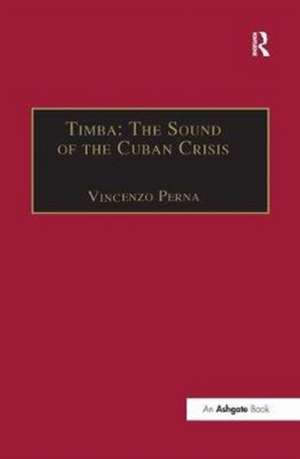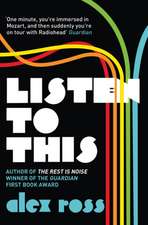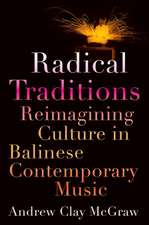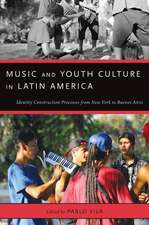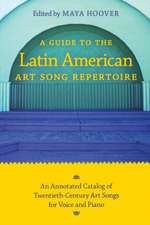Timba: The Sound of the Cuban Crisis: SOAS Studies in Music
Autor Vincenzo Pernaen Limba Engleză Paperback – 11 noi 2016
| Toate formatele și edițiile | Preț | Express |
|---|---|---|
| Paperback (1) | 324.16 lei 6-8 săpt. | |
| Taylor & Francis – 11 noi 2016 | 324.16 lei 6-8 săpt. | |
| Hardback (1) | 768.69 lei 6-8 săpt. | |
| Taylor & Francis – 18 apr 2005 | 768.69 lei 6-8 săpt. |
Din seria SOAS Studies in Music
-
 Preț: 341.08 lei
Preț: 341.08 lei - 9%
 Preț: 867.45 lei
Preț: 867.45 lei - 9%
 Preț: 936.95 lei
Preț: 936.95 lei -
 Preț: 311.18 lei
Preț: 311.18 lei -
 Preț: 310.03 lei
Preț: 310.03 lei - 9%
 Preț: 866.79 lei
Preț: 866.79 lei -
 Preț: 310.75 lei
Preț: 310.75 lei -
 Preț: 311.41 lei
Preț: 311.41 lei -
 Preț: 341.55 lei
Preț: 341.55 lei -
 Preț: 297.49 lei
Preț: 297.49 lei -
 Preț: 377.82 lei
Preț: 377.82 lei - 30%
 Preț: 768.69 lei
Preț: 768.69 lei - 18%
 Preț: 1121.01 lei
Preț: 1121.01 lei - 18%
 Preț: 1063.31 lei
Preț: 1063.31 lei - 25%
 Preț: 766.66 lei
Preț: 766.66 lei - 31%
 Preț: 765.43 lei
Preț: 765.43 lei - 18%
 Preț: 1060.25 lei
Preț: 1060.25 lei - 18%
 Preț: 1058.19 lei
Preț: 1058.19 lei - 18%
 Preț: 1060.11 lei
Preț: 1060.11 lei - 18%
 Preț: 1063.41 lei
Preț: 1063.41 lei - 28%
 Preț: 826.84 lei
Preț: 826.84 lei - 25%
 Preț: 823.17 lei
Preț: 823.17 lei - 18%
 Preț: 1053.16 lei
Preț: 1053.16 lei - 15%
 Preț: 239.96 lei
Preț: 239.96 lei - 18%
 Preț: 1050.09 lei
Preț: 1050.09 lei -
 Preț: 375.50 lei
Preț: 375.50 lei - 26%
 Preț: 766.24 lei
Preț: 766.24 lei - 26%
 Preț: 822.34 lei
Preț: 822.34 lei - 18%
 Preț: 1057.89 lei
Preț: 1057.89 lei - 26%
 Preț: 765.43 lei
Preț: 765.43 lei - 26%
 Preț: 765.43 lei
Preț: 765.43 lei - 25%
 Preț: 769.10 lei
Preț: 769.10 lei - 18%
 Preț: 1061.93 lei
Preț: 1061.93 lei - 30%
 Preț: 768.69 lei
Preț: 768.69 lei - 18%
 Preț: 1055.84 lei
Preț: 1055.84 lei - 26%
 Preț: 734.25 lei
Preț: 734.25 lei - 18%
 Preț: 1108.37 lei
Preț: 1108.37 lei - 9%
 Preț: 1039.64 lei
Preț: 1039.64 lei - 18%
 Preț: 1051.55 lei
Preț: 1051.55 lei - 25%
 Preț: 767.88 lei
Preț: 767.88 lei - 25%
 Preț: 825.21 lei
Preț: 825.21 lei - 18%
 Preț: 1008.97 lei
Preț: 1008.97 lei - 26%
 Preț: 765.01 lei
Preț: 765.01 lei - 26%
 Preț: 764.36 lei
Preț: 764.36 lei - 18%
 Preț: 1005.04 lei
Preț: 1005.04 lei - 31%
 Preț: 765.04 lei
Preț: 765.04 lei - 18%
 Preț: 1068.15 lei
Preț: 1068.15 lei - 31%
 Preț: 763.93 lei
Preț: 763.93 lei
Preț: 324.16 lei
Preț vechi: 432.04 lei
-25% Nou
Puncte Express: 486
Preț estimativ în valută:
62.03€ • 64.76$ • 51.34£
62.03€ • 64.76$ • 51.34£
Carte tipărită la comandă
Livrare economică 04-18 aprilie
Preluare comenzi: 021 569.72.76
Specificații
ISBN-13: 9781138257184
ISBN-10: 1138257184
Pagini: 376
Dimensiuni: 156 x 234 mm
Greutate: 0.45 kg
Ediția:1
Editura: Taylor & Francis
Colecția Routledge
Seria SOAS Studies in Music
Locul publicării:Oxford, United Kingdom
ISBN-10: 1138257184
Pagini: 376
Dimensiuni: 156 x 234 mm
Greutate: 0.45 kg
Ediția:1
Editura: Taylor & Francis
Colecția Routledge
Seria SOAS Studies in Music
Locul publicării:Oxford, United Kingdom
Cuprins
Contents: Introduction. Part I Setting the Scene: Música bailable under the revolution, 1959-89; Music in Havana at the dawn of the perÃodo especial: the emergence of timba; Facing the market: Cuban musicians and audiences into the 1990s. Part II Matters of Style: Timba as a genre and a musical style; Voices, words, bodies: content, meaning, and timba subculture. Part III Dangerous Connections: 'Oh God, Protect Me!': race, religion, and the revolution; 'You are a witch with no feelings': sex tourism, gender, and the representation of women in timba songs; 'Find yourself a sugar-daddy who pays your upkeep': the challenge of música bailable; Marketing nostalgia: the rise of Buena Vista Social Club; Beyond palms, rum and 'Che': black musics into the new millennium. Bibliography; Discography; Documentaries, films and music videos; Index.
Notă biografică
Vincenzo Perna gained his PhD in ethnomusicology from SOAS, University of London, and has been the secretary of the Italian branch of IASPM. He has contributed articles on popular and world music for Italian and British music magazines, written essays for Italian and international encyclopaedias, and lectured at Italian universities and conservatories. He currently works as a freelance music journalist.
Recenzii
Awarded an honorable mention at the Alan Merriam Prize, 51st Conference of SEM/Society for Ethnomusicology in Honolulu, Nov 2006. 'While the rest of the world was mesmerised by Buena Vista Social Club's fairy-tale image of Cuba, the island itself was rocking to a very different music. Far from the nostalgic sounds of Cuba in the 1950s, recreated by forgotten veteran musicians, Timba is the hot, eclectic, sensual, provocative, tense, and witty dance music of Cuba's Black urban youth. Perna's brilliant study documents this music and accounts for its controversial status both on the island and outside. He shows how timba is a bricolage nurtured in the Black neighbourhoods of Havana by musicians trained in Havana's conservatoires, drawing with technical virtuosity and ingenuity on global and local styles as diverse as jazz, hip-hop, rap, rumba and Afrocuban religious music. Perna analyses, for the first time and with remarkable insight, the ways in which this music comments on and challenges the reality of life in late-socialist Cuba, intersecting with contentious issues of race, religion, political ideology and ultimately, Cuban identity. Using methodologies from the fields of ethnomusicology and popular music studies, this book fills a major gap in our knowledge of dance music in Cuba since the Revolution'. Lucy Duran (BBC Broadcaster and Lecturer in African Music, SOAS, London) 'Timba is a first-class study of the contemporary Cuban dance-music scene. Written in a manner that is both rigorous and engaging, Perna's book explores the rise of this hot new music genre and the controversies it generated, and situates it in relation to other current socio-musical developments and the contemporary economic crisis in general. For those interested in Cuban culture and Latin music this is a must-read'. Peter Manuel (Professor, CUNY Graduate Center and John Jay College, US) 'This is a book made necessary not only by its topic, but also by its methodology, by the density of
Descriere
Vincenzo Perna investigates the role of black popular music in post-Revolutionary Cuba, in the 1990s in particular, analyzing the emergence of timba as a distinctively new style of Afro-Cuban dance music. Musically, timba represents an innovative fusion of previous popular and folkloric Afro-Cuban styles with elements of hip-hop and other African-American styles like jazz, funk and salsa. Timba articulates a black urban youth subculture with distinctive visual and choreographic codes.
